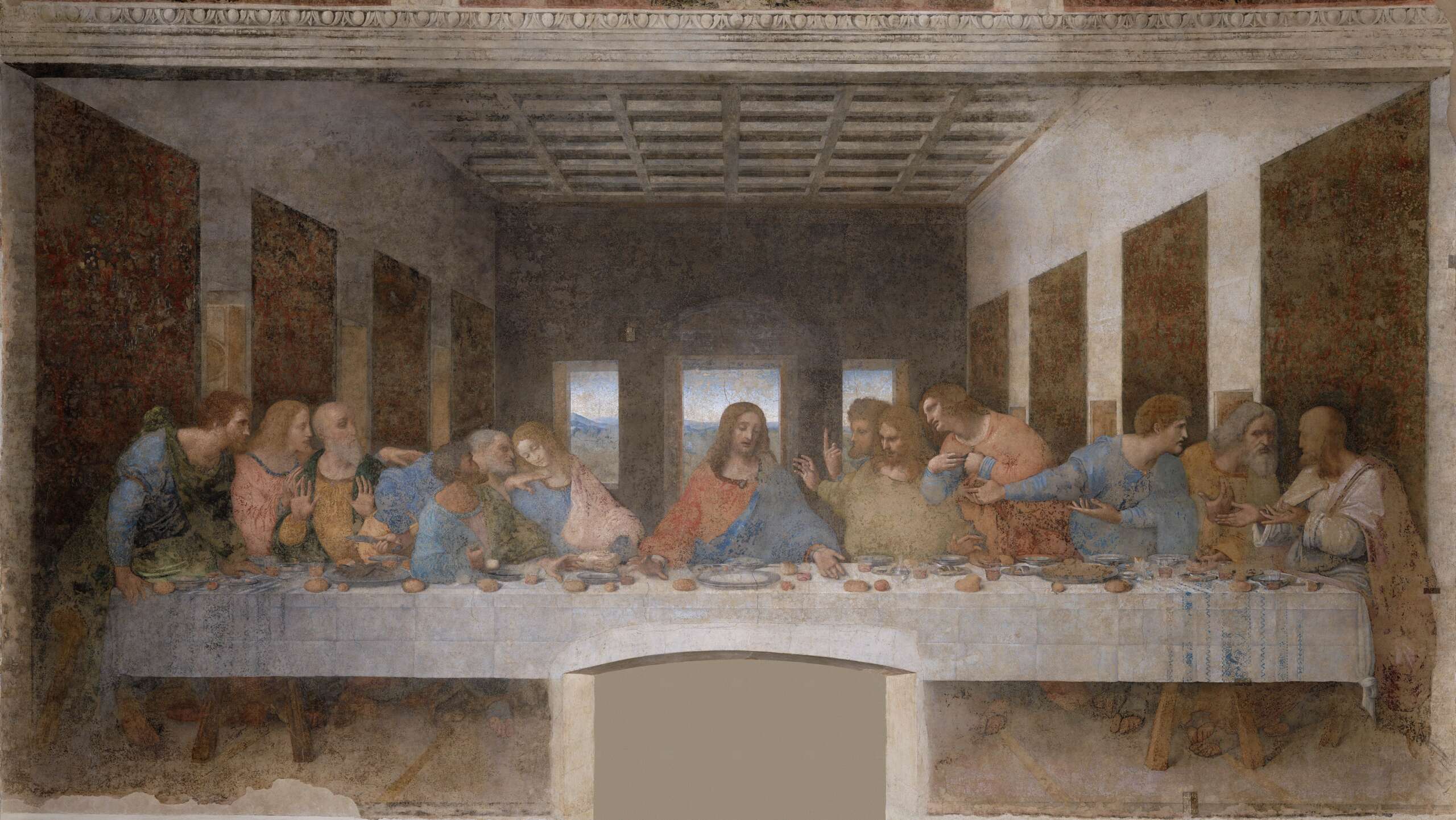Jesus became the unlikely topic of debate in a recent podcast hosted by popular American comedian, political commentator and television host Bill Maher. Maher has become best known in recent years for challenging both sides of the American political aisle, despite being a self-described “liberal” and “progressive” Democrat.
Politics aside, Maher recently interviewed comedian Chris Distefano on his Club Random podcast, and held back groans when Distefano proclaimed his belief in Jesus after reading Lee Strobel’s The Case for Christ. Maher responded with a series of declarations intended to undermine Christianity’s credibility. Let’s examine each of his assertions, and find out whether he succeeded.
“The factual evidence that Jesus existed has always been underwhelming.”
Distefano begins, “The factual evidence that [Jesus] existed is kind of overwhelming.”
Maher tackles the claim head-on: “The factual evidence that he existed has always been underwhelming.”

Bill Maher and Chris Distefano debate the historicity of Jesus on Club Random YouTube
But Distefano is right. The historical consensus is that Jesus of Nazareth lived, and that some historical facts about his life can be established beyond reasonable historical doubt.
Consider sceptical scholar Bart Ehrman’s scathing defense of the historicity of Jesus, Did Jesus Exist? Ehrman, an agnostic who regularly debates against Christians, methodically demolishes both scholarly and popular arguments against the existence of Jesus, collating evidence from the Bible and wider historical records to establish facts about Jesus and the early Christian movement.
Equally confident is Aussie author and academic John Dickson’s cheeky challenge that if anyone can find a full professor of Classics, New Testament or Ancient History who believes Jesus did not live, Dickson will eat a page of his Bible. A decade later, the challenge remains unmet.
“It’s a silly point, because who cares if Jesus lived; it’s whether he then died and was reborn and is up in heaven with his father, who’s really him. That’s where the rubber meets the road.”
Setting aside a couple of theological errors, Maher wisely identifies the million-dollar question: did Jesus really rise from the dead?
Distefano explains that we have multiple early and independent sources about the life of Jesus, comparing this to the relative scarcity of evidence for Alexander the Great.
“Chris, I’m going to have to burst your bubble now, because I have to spit a couple of facts at you. There’s only two sources in the Bible: there’s the four gospels – Matthew, Mark, Luke and John – and there’s another guy …”
The only compliment I can give Maher here is that he demonstrates authenticity in not having his team edit this statement out. It takes a very strange definition of “two sources” to begin by referring to four historical documents!
Unfortunately, from this point on Distefano should be applauded more for his bold and earnest effort than for the content of his contributions. He responds that there are other sources that never made it into the New Testament.
It would have been better to point out that Maher omits the letters of James, Peter and John, and to ask why Maher is limiting this list to biblical sources, when we also have sources from early Christians like Clement, Ignatius and Polycarp, and from early non-Christian sources like Josephus, Tacitus, Suetonius and at least seven others.
“Decades ago, they found the Dead Sea Scrolls, which were other books that were just basically edited out. So we know that a person decided what constituted the Bible, and some stuff just wound up on the cutting-room floor.”
Again, Maher demonstrates only his own confusion. In fact, the Dead Sea Scrolls contain Jewish documents, not Christian ones, and are generally regarded as a groundbreaking source in confirming the reliability of the Old Testament.
The accusation of editing books out is one worth taking seriously. In fact, of course, the biblical canon was not decided by “a person”; it was determined by many individuals and councils, and constantly re-evaluated over hundreds (indeed, thousands) of years.
When books are excluded, you generally just have to read them to get a pretty clear idea about why. For example, near the end of the 19th century, the apocryphal Gospel of Peter was discovered. In it, Jesus triumphantly exits his tomb as tall as a mountain, supported by two enormous angels, and followed by … his cross! Having emerged, the cross itself stops to converse with God, confirming that the gospel about Jesus has reached those in the underworld.
Safe to say, some stuff belongs “on the cutting-room floor”.
“Here’s the important point. There’s only five sources: Matthew, Mark, Luke and John – not contemporaries of Jesus; not even close. They lived from 40 to 70 years after. The first gospel, Mark, is 70 AD, so that’s almost 40 years after Jesus died. So, not contemporaries.”
In this statement, Maher again hints at a not-yet-named source: the letters of Paul, which he will address soon. This time, Maher acknowledges that the four gospels make up four sources. Nice!
Unfortunately, his confident statements about the authorship of the gospels are riddled with holes. Remember, Maher does not deny the traditional authors; instead he asserts that Matthew, Mark, Luke and John were “not even close” to being contemporaries of Jesus.

Da Vinci’s ‘The Last Supper’, featuring John and Matthew. Platonides / Wikimedia Commons
Apparently, Maher doesn’t know that Matthew and John were two of Jesus’ closest friends – not to mention Jesus’ brother James, his chief disciple Peter and his unlikely advocate, Paul.
Just as strange is Maher’s account of the timeline. Since he asserts that Mark’s gospel was written in 70 AD and that the gospel authors “lived from 40 to 70 years after” Jesus’ death in 33 AD, we can only conclude that Maher thinks the gospels were written by babies.
“Saint Paul is the other source of the Bible. Writing around the 50s AD, he’s much closer to Jesus’ time. So you’d think he’d know more about Jesus than the people who came later. But actually, St Paul knows almost nothing about Jesus. There’s no details about his life like there are in the gospels.
“He went around and did miracles and everybody loved him; he gets quoted a lot; he makes speeches; he has adventures; he goes into the desert; then at the end, it’s a whole drama and he’s crucified. Paul doesn’t know any of this – all the stuff that the gospel writers obsess about. It’s a little strange.”
Here, Maher raises a substantial criticism of the New Testament: is Paul’s conception of Jesus inadequate and discordant with the gospels’ portrayal?
It’s unclear why Maher thinks earlier sources should include more information about Jesus. We have already noted that John and Matthew were Jesus’ close contemporaries. In this case, not only closer proximity but also more time would actually equal more information. Luke tells us explicitly that he spent time “carefully investigating everything from the beginning”, having already encountered many other accounts handed down by eyewitnesses.
This underscores how the gospel writers wrote accounts of Jesus’ life, whereas Paul wrote letters to already established churches, who already knew the traditions about Jesus. Paul’s references to these traditions are occasional, not systematic.
Considering Paul never set out to record an account of Jesus’ life, he did a pretty solid job anyway.
Most importantly, Maher is simply wrong about Paul’s portrayal of Jesus. Maher says that Paul knew “almost nothing about Jesus”, including about his crucifixion!
In reality, Paul presents Jesus as the descendant of Abraham and David, born of a virgin, with several half-brothers, including one named James. He presents Jesus as a humble and gentle man, who washed the feet of his disciples and instituted a memorial meal on the night he was betrayed; who was insulted, testified before Pontius Pilate and was crucified by Jews; who was buried, but was raised on the third day and appeared on many occasions to hundreds of total witnesses, most of whom were alive to confirm Paul’s account; and who, having ascended into heaven, now sits at the right hand of God, interceding with his Father for us. [1]
Considering Paul never set out to record an account of Jesus’ life, he did a pretty solid job anyway.
“When I heat up about something, it’s real. I’m not acting it, because that I think is my bond with the audience. They know I’m never acting or faking it or pulling a punch.”
As the conversation concludes, Distefano compliments Maher for his genuineness, especially compared to others in Hollywood circles, and Maher explains that his opinions are always “real”.
I think the challenge for Maher, if he wants to be “real” and “genuine”, is this: if you want to speak with conviction and authority to a huge audience on an issue of such immense importance as religion, you might start by learning the basics.
And I think the challenge for us, if we want to live wisely in the media era, is this: we ought to be careful when people speak with conviction and authority on an issue of importance, because there is a significant chance they have no idea what they are talking about.
Minor alterations have been made to the wording of Maher’s assertions, purely for the sake of clarity and brevity.
[1] Jesus and the Logic of History, Paul Barnett, 2001, pp.57-58


